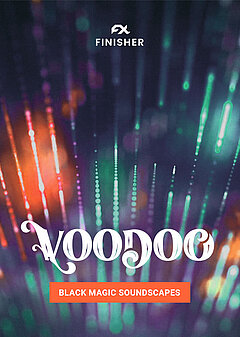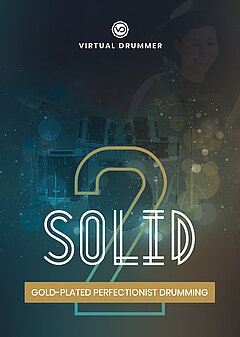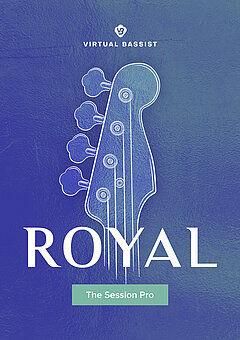How to Create a Pop Riff
Learn how to find the right groove, the perfect notes and a rhythm that slaps, in any genre.
MAY 23RD, 2020
Have you ever seen a lone guitarist hold a sea of fans spellbound, even without the help of a bassist or drummer? It probably didn’t take long until the full rhythm section came in and pushed the song forward, but there was so much power in only a few notes.
That’s the effect we’ll show you how to recreate in this article.
What is a riff?
On a general level, a riff is a short melodic/chordal phrase with a punchy rhythm that repeats every 1 or 2 measures. For the purposes of this article, we’re going to assume the instrument of choice is an electric guitar (if you’d like to see how to use Virtual Guitarist plugins to follow along, you can download SPARKLE for free). A lot of rock songs start off with a simple guitar riff that defines the feel of the song; an excellent example of this is the muted guitar opening of The Police’s Every Breath You Take.
A brief note on style
As with writing a regular melody, it’s critically important to define exactly what key you’re in. A major key riff should naturally sound very different than one in a minor key. The reasons for that may seem obvious, but let’s dive a bit deeper.
When you create a riff designed for a major key, try making it minor (lower the 3rd, 6th and 7th notes of the scale by a half step). It might still work, but...does it feel like you’re writing an entirely different song? What was once an uptempo ballad might now sound like a funk project.
Once you push, prod, and pull your riff however feels most natural to you, repeat it several times in succession. Is it fun to hear again and again? Does it have enough energy? Does it have too much? Did you inject enough of your unique personality into it?
Nailing the perfect rhythm
If creating riffs is still relatively new to you, it’s a good idea to start with some virtual drumming to back you up. One of the best drum VSTs for this is Virtual Drummer SOLID, as it makes it incredibly easy to lay down a quick backing beat in a wide variety of genres. You don’t have to compare drum plugins too carefully, as long as your weapon of choice can get a groove going, relax you into the process, and get your musician’s intuition flowing a bit easier.
The drum beat you choose will have a huge impact on style. For example, a ballad drum groove might make you want to play something slow, with straight 8ths. An R&B groove might stir up some sparse but smooth phrases that ring out for a couple extra beats. Funk will almost invariably force you into a bit of playful syncopation (holding a note through the start of the next beat and playing one or more followups on the “and”). There’s certainly no one correct way to do it, but the more familiar you are with a specific genre, the more likely you are to add subtle nuances without even thinking. There’s a simple trick here--listen to a LOT of music!
Listen very carefully to the kick and snare as you’re playing with a backing track. Often enough, the best riffs emphasize notes around but not on the exact beats that become the focus of the drums. This is a great general tip for both producers and live performers--don’t step on anyone’s toes, but instead listen for openings that you can exploit. If you develop the ability to listen for where the blank space is in a song, you’ll quickly become adept at filling it in with riffs that make the entire rhythm section lock together.
Putting it into practice
For the purposes of this article, pull up that demo of SPARKLE mentioned earlier. Familiarize yourself with Common and Style Phrases, playing the chords you want in your right hand while holding down the phrase you want in the left. Take a few minutes and play different phrase notes in sequence to find the right sequence that fits in with the drumbeat of your choice. There’s no shortcut through this part; you just have to sound it out until you’re happy with it!
You’ll probably find that the ideal riff uses mainly Common Phrases, interspersed with a few Style Phrases here and there to mix things up. Add a Virtual Bassist like ROYAL into the mix, and you’ve got a full rhythm section grooving to your riff! A word of caution here: make sure that you don’t write too much for the bass. A great bass line feels natural and avoids clashing with the guitar and drums.
Writing a great riff is a broad topic, but these tips should help streamline the process a bit. If you feel stuck, you can refer to this Virtual Guitarist tutorial for SPARKLE. And always remember--when you’re stuck for inspiration, look no further than the great artists who came before you!
Editor’s Note
ujam’s latest release, Finisher VOODOO, is a match made in heaven for your guitar riffs. Its custom-designed effect matrix sounds great on all your guitar tracks. Electric or acoustic, direct or amped, virtual or real. Be sure to try VOODOO and get it while it’s hot.
Stay up to date
Sign up and we’ll send you an e-mail with product news and helpful stuff every now and then. You may unsubscribe at any time.
Defy Limits
We develop software solutions that enable people to create, consume and interact with music.




